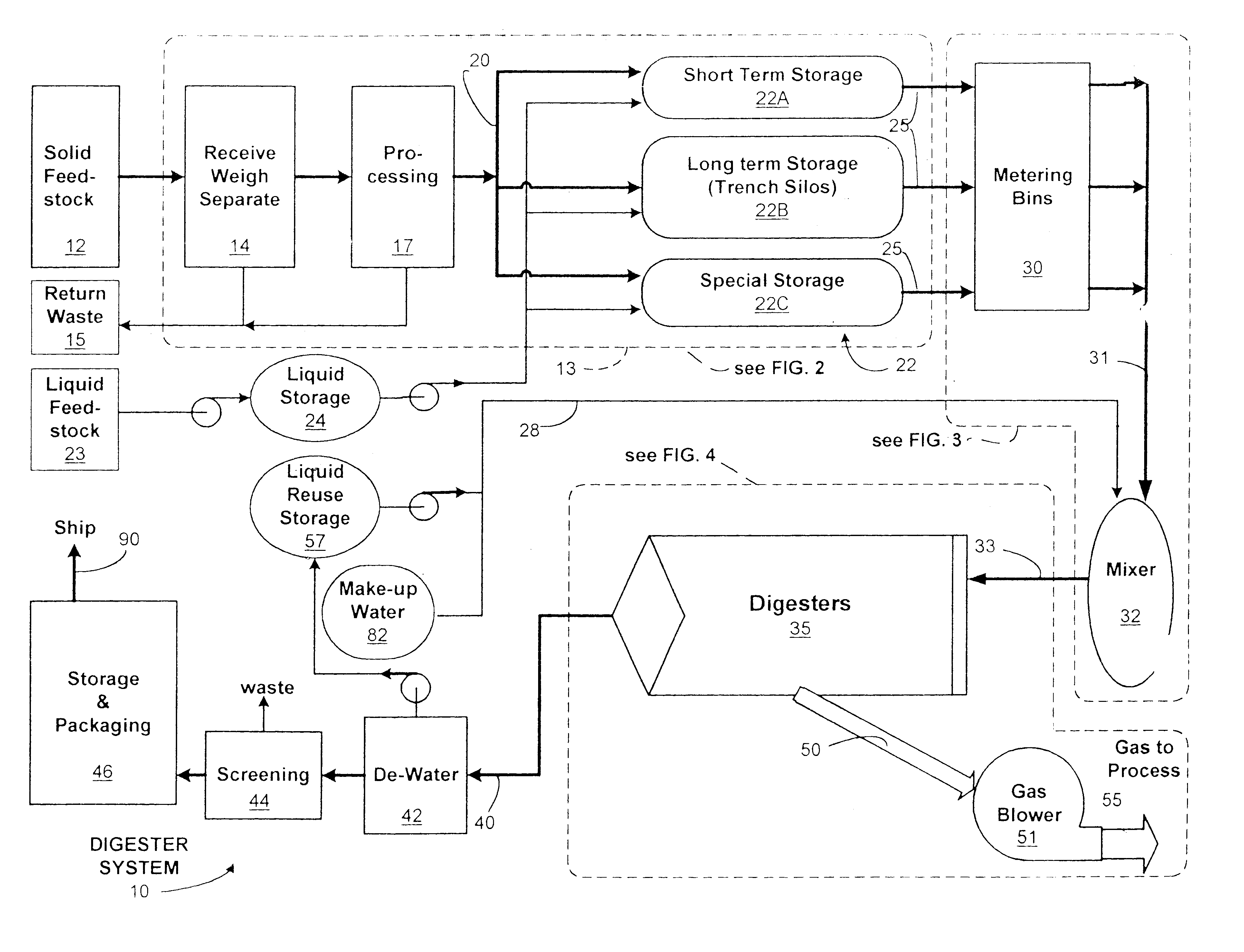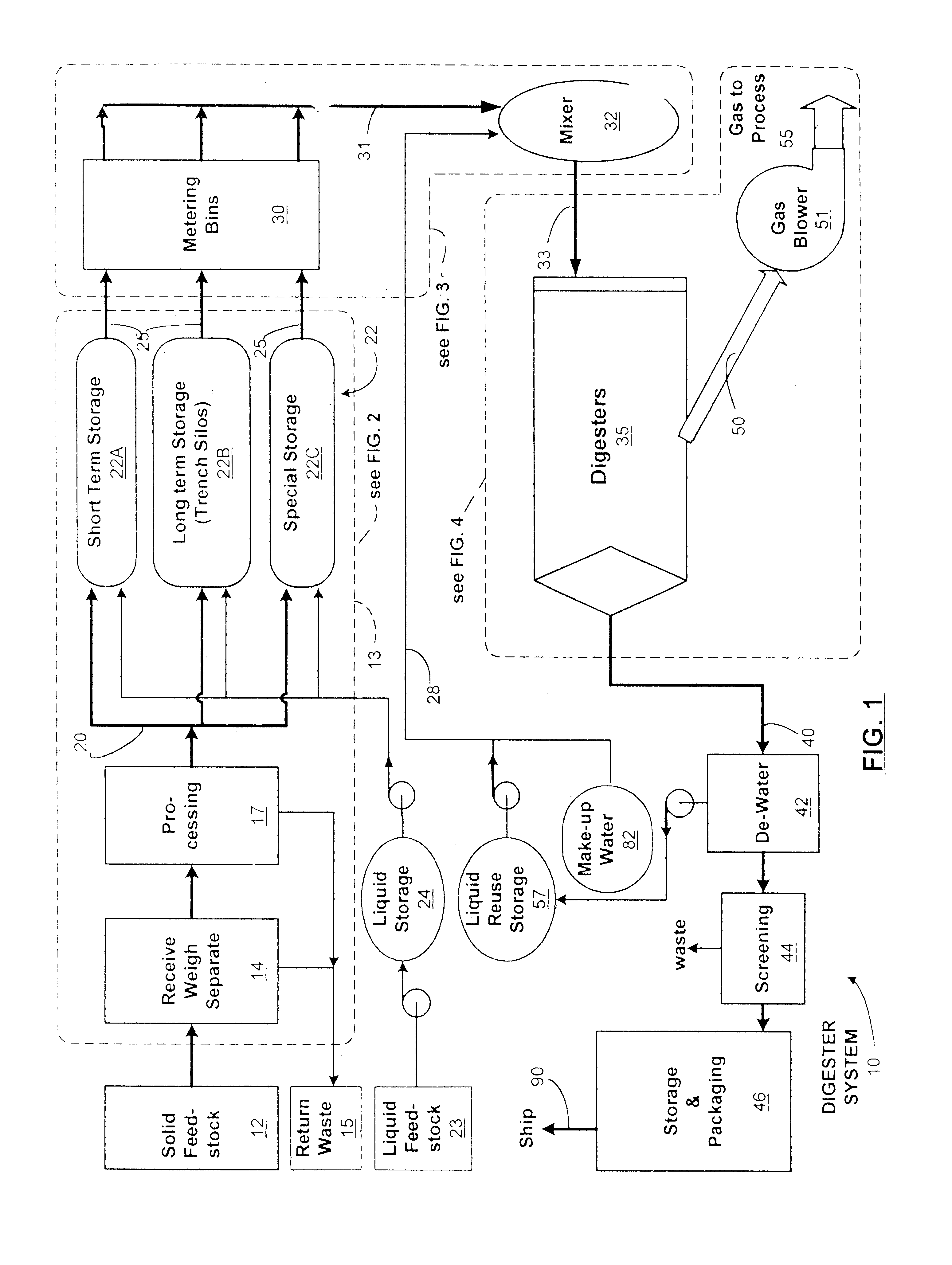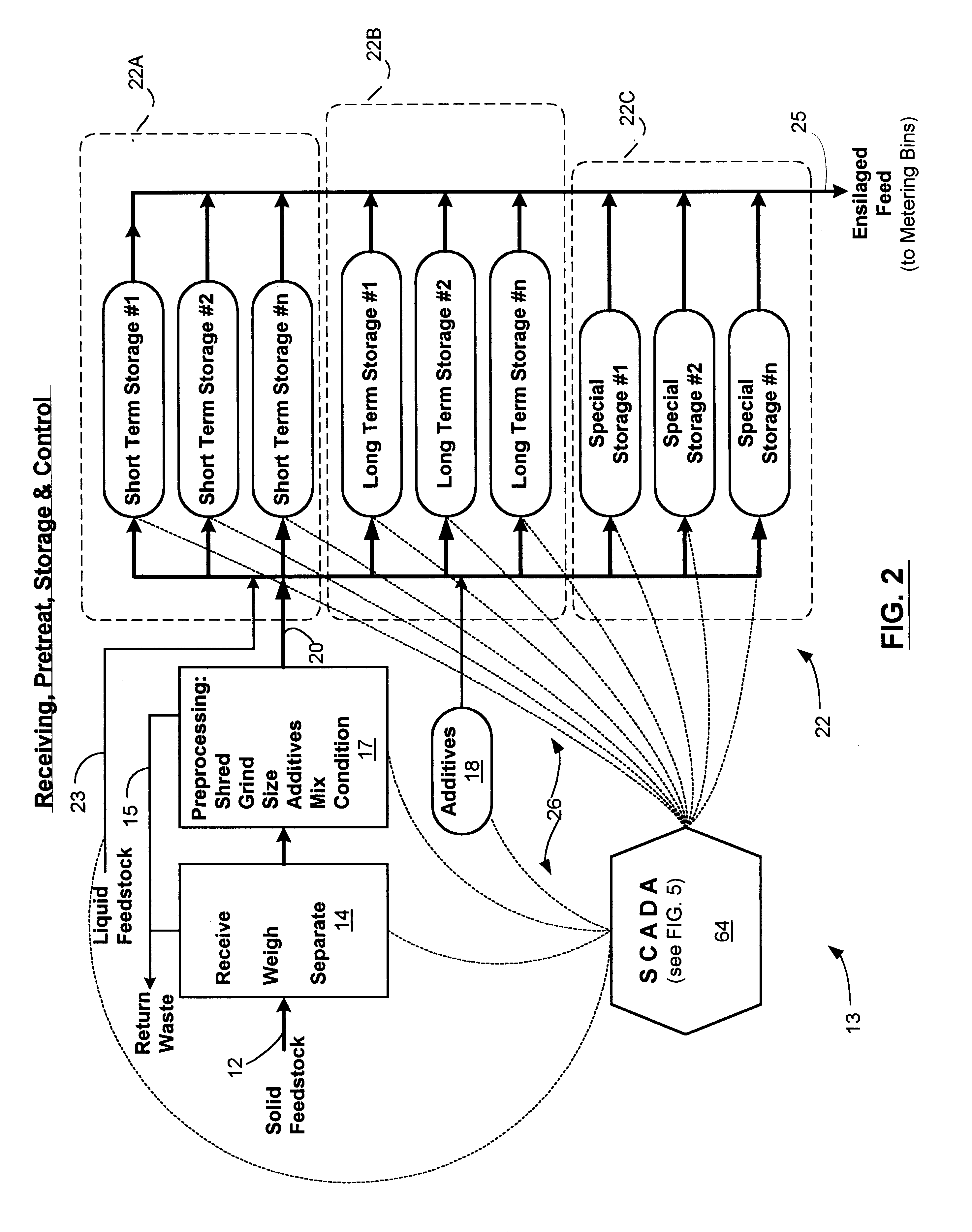Anaerobic digester system
an anaerobic digester and digester technology, applied in the field of anaerobic digester system, can solve the problems of industrial scale, lack of uniform quality of end product, and dismissal of anaerobic digester as a viable, reliable source of methane at industrial scale, and achieve the effect of better monitoring and control
- Summary
- Abstract
- Description
- Claims
- Application Information
AI Technical Summary
Benefits of technology
Problems solved by technology
Method used
Image
Examples
Embodiment Construction
The invention provides a method for a digester system that utilizes anaerobic microbes to convert organic material into methane (CH.sub.4) and a plant growth media on an industrial scale.
System Overview
A preferred embodiment of a digester system of the present invention is schematically shown in FIGS. 1 through 7. FIG. 1 shows an overview of the digester system 10. The pre-treatment processing stage of the digester system receives and processes a solid feedstock 12. The pre-treatment process used by the digester system is the process called ensilaging, or making silage. Ensilaging is a first phase of the anaerobic digestion process in which a biomass, or solid feedstock is prepared for a digester 35 by an initial, acidic fermentation by anaerobic microorganisms. The solid feedstock is received into preprocessing and storage components 13. The digester system initially transfers a pre-processed material stream 20 into a storage component 22, which, as detailed in FIG. 2, are preferab...
PUM
 Login to View More
Login to View More Abstract
Description
Claims
Application Information
 Login to View More
Login to View More - R&D
- Intellectual Property
- Life Sciences
- Materials
- Tech Scout
- Unparalleled Data Quality
- Higher Quality Content
- 60% Fewer Hallucinations
Browse by: Latest US Patents, China's latest patents, Technical Efficacy Thesaurus, Application Domain, Technology Topic, Popular Technical Reports.
© 2025 PatSnap. All rights reserved.Legal|Privacy policy|Modern Slavery Act Transparency Statement|Sitemap|About US| Contact US: help@patsnap.com



